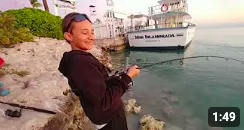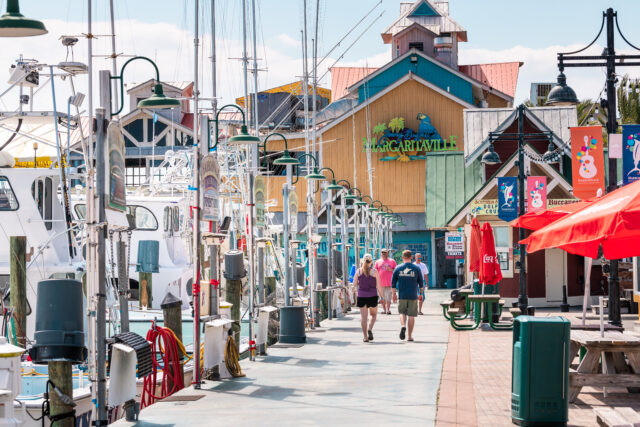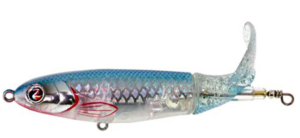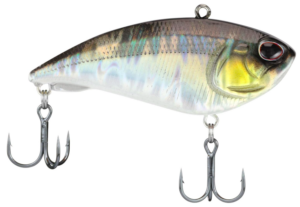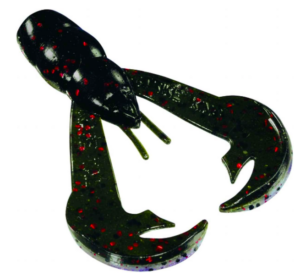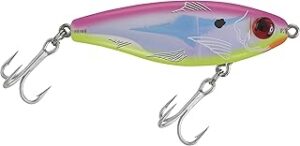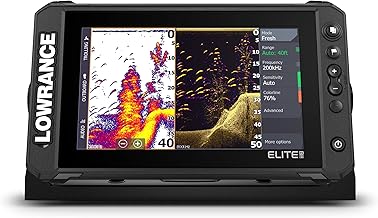Rainy Lake is one of the better walleye fishing lakes in the state of Minnesota and the fishing is usually even better for walleye on the Canadian side. If you know how to catch walleye, you can have some really good days on Rainy Lake. It’s not just a good lake for numbers of walleye, there are some nice trophy walleye in this lake.
Rainy Lake in the Spring
| Month | Avg. Air Temps °F Highs | Avg. Air Temps °F Lows |
| March | 34° | 15° |
| April | 50° | 29° |
| May | 66° | 42° |
From late spring through early summer, good numbers of walleye will be found in the shallows, so you can catch a lot of walleye just casting along the rocky shorelines. You will also catch plenty of smallmouth bass and northern pike while targeting walleye.
Rainy Lake in the Summer
| Month | Avg. Air Temps °F Highs | Avg. Air Temps °F Lows |
| June | 73° | 52° |
| July | 78° | 57° |
| August | 75° | 54° |
You still can catch some walleye along the rocky shorelines, points and islands, but the better bite will come out on the reefs in deeper water.
Rainy Lake in the Fall
| Month | Avg. Air Temps °F Highs | Avg. Air Temps °F Lows |
| September | 64° | 45° |
| October | 51° | 35° |
| November | 32° | 20° |
In the fall, walleye will still be schooled up in deeper water out on the main lake. Fish the reefs and search for suspended fish out over deeper water on the main lake basin. At times, walleye will move into the wind blown shorelines and points to feed on schooling minnows, so don’t rule out the shallows entirely in the fall.
Fishing Rainy Lake in the Winter (Ice Fishing)
| Month | Avg. Air Temps °F Highs | Avg. Air Temps °F Lows |
| December | 18° | 2° |
| January | 13° | -5° |
| February | 20° | 1° |
Anglers do fish Rainy Lake through the ice every winter. There are more lodges and outfitters available to fish through the ice on the Minnesota side than in Canada, but you can target walleye through the ice in both parts of the lake during the winter.
More Tips
Fish the Bays
This lake is so big that some of the bays will fish like smaller lakes, so you may find a little bit of everything in some of the bigger bays, while some of the smaller bays may be more appealing in the spring and fall compared to the summer.
In some of the big bays, look for offshore structure such as reefs. Shorelines with steep drop-offs are also good places to search for walleye. Rocks tend to hold more walleye on Rainy Lake than the weeds, however, don’t rule out a nice deep weed edge because there will be some walleye mixed in there too. However, on many of those weedy edges, there will be so many pike around that the walleye tend to move out and find some better rock structures with less pike around.
Some of the bays will have creeks that feed into them and these spots can be awesome early season spots as the waters just start to warm up. Current will bring bait fish into the area and walleye will follow.
Fish the Current
The creeks, spillways and waterfalls that carry water into Rainy Lake can offer some excellent spots for catching walleye. Spring and fall tend to be better than the mid-summer, however, some of these spots will hold walleye all summer long too.
Fish the Islands
There are so many islands on Rainy Lake and most of them will provide many of the things that walleye like. Deep water just off the island combined with some rock or weeds will usually equal walleye. However, there are so many islands and walleye are known for moving long distances throughout the year, so every island will not always produce and many of them will be much better than others. A wind shift, temperature change or just a couple of big pike moving into an area can dictate whether walleye will be there or not. A good place to start is to find the islands that have a nice drop-off. In the spring though, you may find walleye stacked up in the shallows around these islands. Any time you can find deeper water with wind blowing into that part of the island, it is worth spending a little time there. Find 15, 20, 30 or even more island spots like this on any given day and you should be able to find some walleye.
Fish the Points
The points look great on Rainy Lake and they do hold fish, however, lots of pike like to spend some time on the points as well, so don’t be so stuck on one spot just because it looks good. If the fish aren’t there, keep moving until you can find some active walleye. Points with some wind blowing into them combined with some deeper water will usually be better spots to fish. Rocks are good, however, some spots with weeds will also hold some walleye too.
Fish Reefs
The reefs are where it’s at when targeting walleye on Rainy Lake. Once the spring and early summer end, walleye will usually be found on the reefs from summer through fall. There are always some fish that can be found shallow throughout the year, but the reefs will consistently hold walleye in the summer and fall. Fish the deeper drop-offs along the reefs and don’t be stuck on one spot for too long if you don’t see fish there. You have a lot of options on Rainy Lake when it comes to reef fishing. This lake has so much offshore structure that you couldn’t fish it all even if you wanted to. Get a good map with gps coordinates and keep moving reef to reef until you find them.
Fish the Rocks
Walleye love rocks on Rainy Lake. This lake is loaded with them and you will usually find the better walleye bite coming around the rocks. Because Rainy Lake is such a good pike lake, the northern pike will usually control many of the better deep water weed edges, so walleye usually relate more to the rocks on Rainy Lake.
Fish the Wind Blown Structure
The wind blown structure will hold a lot of walleye from summer through fall. You can catch a lot of walleye by fishing the many islands, points and reefs where the wind is blowing into them. These areas with access to some deeper water is key. You may find walleye anywhere from 15 to 30 plus feet deep during the summer and fall.
Fish the Weeds
The weeds will almost always hold more northern pike than walleye on Rainy Lake, however, I don’t want you to think that you can’t catch any walleye around the weeds here because you might rule out some good weed edges that could have produced a nice walleye or two for you. However, if you’re looking for good numbers of walleye with some trophy potential, you’re going to have more success the majority of the time by fishing the rocks or open water vs. the weeds.
The exception to this is the spring time when walleye move into the shallows. You can cast for walleye similar to how you would fish for bass and at times, you can find some very nice walleye mixed into those 3 to 8 foot area with weeds, cabbage, etc.



